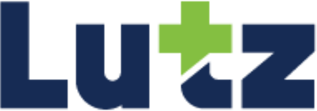Rural/CAH EHR Software Conversion Best Practices

There is a rising trend of rural healthcare facilities going through EHR software conversions. The facilities may be making the change for a variety of reasons, from the current software being phased out, providers looking for a better experience and better features for their patients, to facilities needing additional assistance with billing or AR as it becomes increasingly difficult to find and keep good employees. Whatever the reason, it is a crucial decision that can greatly impact a facility’s employees and financial position.
Software conversions can be a great benefit to rural facilities. They can increase charge capture, provide better billing processes, and improve real-time inventory valuation, efficiency for front-line workers, accounts payable processes and department spending accountability, and financial reporting. It is important to consider the many factors that go into a software conversion and ensure you and your team are prepared to take on this project. From an accounting and finance perspective, we recommend the following best practices to help the conversion process go smoothly and minimize any unneeded negative financial and employee experience implications.
POTENTIAL FINANCIAL IMPLICATIONS OF A EHR CONVERSION
It is important to know that a software conversion will impact your financial statements and cash flow. The better the conversion, the quicker facilities should see their cash and days in AR return to their normal status and improve long-term. These are the typical financial impacts facilities experience when going through a conversion:
- Increase in days in AR
- With any conversion, from a conservative perspective, it is recommended to anticipate that your days will be higher for anywhere between 3-6 months. In the case of a bad conversion, days in AR can skyrocket and take a year or more to get back to normal levels. Especially for the billing/claims processing and AR perspective, the more issues left outstanding at the time of go-live, the higher days in AR will be.
- As your days in AR increase, the cash inflow will slow down
- It is important to not only take into consideration the cost increase of a conversion but also the anticipated decrease in cash flow. It is important to complete a financial projection to ensure that you have enough funds to support both factors.
- The cost and time of training could be significant
- For the conversion to be successful, it is important to take the time needed for training and development.
- Revenue may decrease
- This may only happen for the first few months, but the new processes will slow down timely charge capture at first until staff is up to speed.
CONVERSION BEST PRACTICES
1. BILLING AND CLAIMS PROCESSING
It is important to understand and train employees on the full billing process for the new software. Not just the standard process on how to get a claim out the door but how to:
- Troubleshoot
- Work denials
- Manage work queue or workflows
- Process refunds
While the billing process will be most of your training prior to your go-live date, these processes can be just as important to managing day-to-day once you are working in the new system.
Other things to consider:
- Billing process for all your major payers
- Some payers are more difficult to submit a claim than others. Make certain your unique needs and payer mix have been addressed.
- Billing process for each of your service lines
- Home health and long-term care’s unique cycle billing can create difficulties depending on the software.
2. ACCOUNTS RECEIVABLE
Accounts Receivable (AR) management is a major decision when going through a software conversion. There are a couple of different options for managing AR in the old legacy system. Many of the legacy systems are willing to keep the AR module open and allow you to continue to manage your legacy AR in their system for a fee. We have seen that this is typically the best option for price and ease of use.
If this is not an option for you, there are companies that will manage the legacy AR for you. This is more costly and can come with added complications of transferring the AR in detail to the new company. If your new software is posting payments on your behalf, here are a few key items to consider:
- Understanding how you will reconcile cash will be critical
- Identifying how to get the external posting team information they need
- Clarifying which team (your internal or the external posting team) will be posting the distinct types of deposits you receive
- Ensuring that all adjustments and write-offs are mapped to the correct general ledger account
- Use your current mapping to be your guide, and make sure your accountant reviews and approves.
- Confirming you have accurate reports that tie to the general ledger - suggested reports to have:
- Revenue detail
- AR detail
- Adjustment/payment reports are critical for accounting.
- Cost report data that will be necessary, including CAH hours, observation log, ER log and Medicare bad debt
3. MATERIAL MANAGEMENT SYSTEM
Typically, the material management conversion is fairly straightforward. However, please keep the following items in mind:
- Ensure reports are available that can produce an inventory valuation report for year-end audit
- Most systems will upload the current item list, pricing, and quantity
- Recommend that an inventory count is done at the time of the conversion
4. PAYROLL CONVERSION
Payroll conversion can be tricky. It is imperative that the conversion is done correctly the first time to ensure all employees are paid timely and accurately. After go-live, there will not be much time to work out bugs.
Keep in mind the following:
- Important to get everyone’s pay, department, and benefits information imported into the new system
- Payroll systems could interface with the general ledger or require a journal entry to be manually posted
- Essential that payroll maps to general ledger correctly
- If done incorrectly, could spend a significant amount of time reviewing and correcting the payroll mapping
- If possible, run a test of a payroll that has been posted to the general ledger by the current system to see if the new system is creating the same journal entry
- Test multiple payrolls if possible.
- Key factor that sometimes goes overlooked is PTO
- Ensuring that everyone is going to accrue PTO properly
- That all PTO codes will correctly reduce PTO
- Fixing this issue is very timely and can affect employee morale if the system is showing an incorrect number of PTO hours available
5. GENERAL LEDGER AND ACCOUNTS PAYABLE
The general ledger and accounts payable system is the final piece involved in the conversion process. This conversion will be critical to guarantee that you are producing accurate monthly financial statements for your board of directors and ensuring a smooth year-end audit. A facility should also ensure proper and consistent matching of revenues and expenses from a cost report perspective.
Principal factors to consider:
- How to extract account and department information
- Seeing an increase in unique ways that newer software compiles account and department information
- Recommend uploading at least one year of general ledger history
- Compare that data to what is in the current system and double-check that everything matches
- While you have the support of the conversion team, ensure that all financial reports are built as you need them and that they tie to the correct net income
- What other financial reports would you like to have, and can those be built in the new system?
- Will have the most support before going live, so address these issues early and often while you have the software experts at your fingertips
- Consider what you do not like about the current chart of accounts and update the new chart of accounts
We do not see many issues with accounts payable during conversions. There is software that allows for electronic approval of invoices by the department leaders, which can help in closing AP timely as well as getting all invoices posted to the correct period.
Again, software conversions can be the tool rural facilities need to succeed in the future. However, it is imperative to take the time needed to ensure the conversion process will go smoothly. If not, there can be material financial implications and negative impacts on employees. If you are currently going through a software conversion or are planning one in the future, please keep these best practices in mind. If you would like assistance with the conversion from an accounting and finance perspective, please contact us.

- Harmony, Woo, Communication, Maximizer, Achiever
Katie Roberts
Katie Roberts, Healthcare Director, began her career in 2015. She has gained specialized expertise in healthcare accounting and consulting while taking on leadership roles in training and development.
With her experience in healthcare financial management, Katie focuses on providing outsourced CFO services to rural hospitals and clinics. She delivers comprehensive solutions, including monthly financials, budgets, projections, and Medicare cost report guidance. Katie is dedicated to supporting rural healthcare facilities, recognizing their importance as essential service providers and key employers in their communities.
At Lutz, Katie’s commitment to excellence, combined with her ability to optimize processes, has helped strengthen the firm's reputation as a trusted advisor to critical access hospitals. Through her leadership, the healthcare consulting practice has expanded its reach while maintaining the personalized service that rural facilities depend on.
Katie lives in Davey, NE, with her husband Mason, son Cooper, dog Cali, and four chickens. Outside the office, she can be found boating, camping at their family’s cabin, golfing, and cheering on the Huskers.
Recent News & Insights
Financial Planning Advice for Recent College Grads
2024’s Hot Stocks Have Cooled Fast + 4.23.25
Do You Need a Family Office? 7 Aspects to Consider
Tariff Volatility + 4.7.25



.jpg?width=300&height=175&name=Mega%20Menu%20Image%20(1).jpg)
%20(1).jpg?width=300&height=175&name=Mega%20Menu%20Image%20(2)%20(1).jpg)
%20(1)-Mar-08-2024-09-27-14-7268-PM.jpg?width=300&height=175&name=Untitled%20design%20(6)%20(1)-Mar-08-2024-09-27-14-7268-PM.jpg)

%20(1)-Mar-08-2024-09-11-30-0067-PM.jpg?width=300&height=175&name=Untitled%20design%20(3)%20(1)-Mar-08-2024-09-11-30-0067-PM.jpg)
%20(1).jpg?width=300&height=175&name=Mega%20Menu%20Image%20(3)%20(1).jpg)
%20(1).jpg?width=300&height=175&name=Mega%20Menu%20Image%20(4)%20(1).jpg)
%20(1).jpg?width=300&height=175&name=Mega%20Menu%20Image%20(5)%20(1).jpg)
-Mar-08-2024-08-50-35-9527-PM.png?width=300&height=175&name=Untitled%20design%20(1)-Mar-08-2024-08-50-35-9527-PM.png)


.jpg)




